OSIRIS-3U Satellite
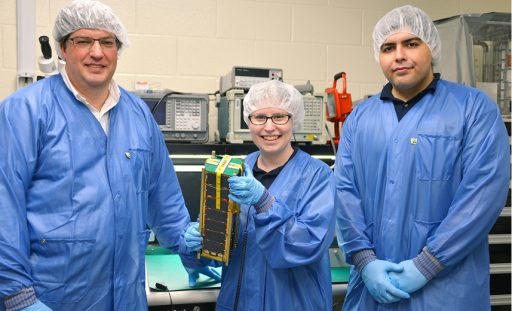
OSIRIS-3U is a CubeSat mission going by the full name “Orbital Satellite for Investigating the Response of the Ionosphere to Stimulation and Space Weather.” The three-unit CubeSat was developed by students at the Penn State University to study the impact space weather as on communication networks.
The OSIRIS-3U mission seeks to investigate radiowave interaction in the ionosphere, specifically the interaction of high-power radio waves which are known to cause large ionospheric drops in electron density in the F-region that begins around 190 Kilometers in altitude. OSIRIS-3U aims to determine to where plasma is displaced as a result of arriving radio waves.
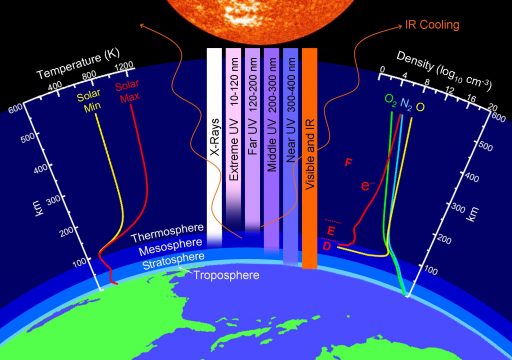
The F-region reflects radio signals which is exploited by airplanes for air-to-ground communication, ships for sea-to-shore communication, over-the-horizon radar systems, military and governmental communication systems, shortwave radio broadcasting and amateur radio operators. OSIRIS-3U will conduct in-situ and close-range observations in the ionospheric F-region while radio pulses are being deliberately targeted at the satellite’s location by a ground-based transmitter to artificially stimulate the ionosphere and create the interactions that are of interest to the mission.
To accomplish its science goals, OSIRIS-3U hosts a Langmuir Probe for the measurement of electron density, temperature and electric potential of the surrounding plasma; a Coherent Electromagnetic Radio Tomography (CERTO) beacon for measuring the total electron content (TEC); and a GPS Radio Occultation sensor for TEC measurements between the satellite and the GPS craft and to capture scintillation data.
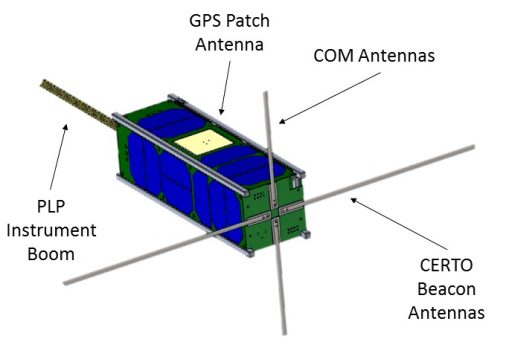
The OSIRIS-3U mission has four core objectives: a) to provide in-situ and remote sensing measurements of the stimulated (heated) ionosphere produced by ground-based heaters (radio transmitters); b) to characterize the spatial extent of the heated region (known as bite out); c) to correlate in-situ and remote sensing measurements with ground-based measurements such as incoherent scatter radars; d) to provide a hands-on exercise for students in space systems design. A secondary objective is to investigate anomalous electron number density enhancements in the nighttime ionosphere.
OSIRIS-3U employs a three-axis stabilized CubeSat platform with two CubeSat units budgeted for the bus section while the science payload is packaged into a single CubeSat unit. One particular feature of the OSIRIS-3U CubeSat is the use of Indium Tin Oxide (ITO) coated coverglass for the solar cells that acts as a passive ion collector while transmitting 92% of solar energy to the solar cells. The passive collection of positive ions helps manage the spacecraft potential for proper operation of the Langmuir probes.
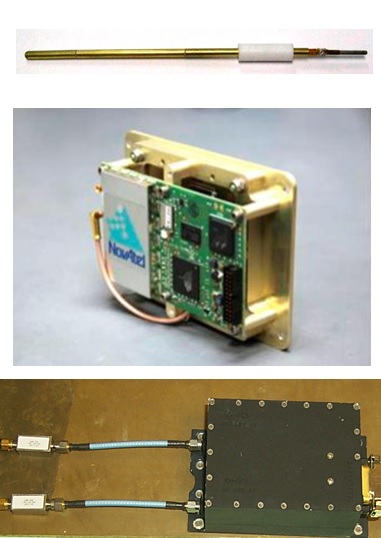
The primary ground-based element of the OSIRIS-3U mission is the Arecibo Observatory in Puerto Rico that will send 200-Megawatt (effective radiated power) pulses into the ionosphere at frequencies of 5.125 and 8.175 MHz, heating up the ionosphere – essentially simulating a solar storm at a precisely known location, time and energy input. Arecibo supports beamwidths of 6.5 to 10.1 degrees, yielding a 70-Kilometer wide artificially stimulated region the satellite can traverse in a period of just ten seconds.
Langmuir probes can determine electron temperature, electron densities and the electric potential of a plasma. Two or more electrodes are inserted into a plasma environment with a constant or time-varying electric potential between them to allow the determination of physical plasma properties by measuring currents and potentials in this electrode system. A bias voltage is applied to the probe and the resulting current that is measured is proportional to plasma charge density.
The OSIRIS-3U Langmuir Probe makes use of a pulsed technique to mitigate contamination effects on electron density.
CTECS, the Compact Total Electron Content Sensor, was developed by The Aerospace Corporation as a small-sized GPS occultation instrument comprising a NovAtel patch antenna as receiver, amplification and digitization circuits.
The CTECS sensor is a GPS receiver optimized to make Total Electron Content measurements, determine electron density altitude profiles and ionospheric scintillation measurements. CTECS tracks the L1 and L2 GPS signals as the atmosphere moves between the line of sight between the sensor and GPS satellite to obtain vertical profiles. The system comprises a custom-made antenna system, low-noise amplifying electronics and a NovAtel OEMV-2 GPS receiver.
Overall, CTECS weighs less than 200 grams and delivers a maximum of 62 MB of data per day. Typically, CTECS monitors 10 to 15 signals from the GPS constellation for up to 15 simultaneous Total Electron Measurements.
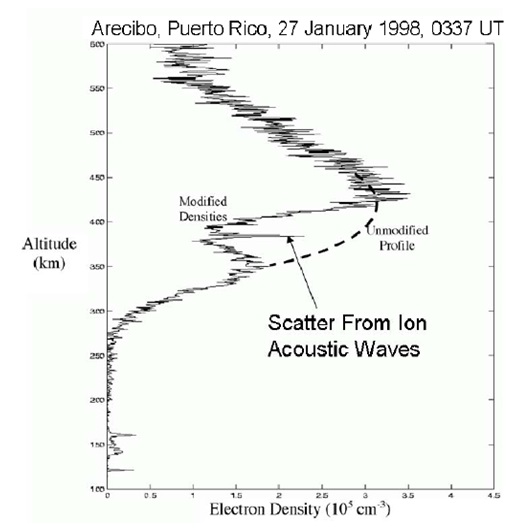
The instrument’s antenna is 7.6 x 7.6 x 1 cm in size and capable of receiving L1, L2 and L2c signals for refraction measurements from which the total electron content and its vertical profiles can be extracted. CTECS makes measurements of the L1/L2 pseudorange and L1/L2/L2c phase, taking advantage of the satellite’s relatively low orbit to measure a large amount of density above the satellite.
Coherent Electromagnetic Radio Tomography (CERTO) uses a UHF & VHF transmitter on the satellite and receivers at Arecibo to create a two-dimensional reconstruction of electron density between the ground-based receiver and the satellite.
With the in-situ measurement of electron temperature & density, remote sensing of electron density above the satellite (via GPS occultation) and below the satellite (CERTO), it should be possible to provide a conclusive answer the question where does the plasma go when large ionospheric bite-outs are produced by energy inputs into the ionosphere – shedding new light on space weather dynamics and Sun-Earth interactions.
